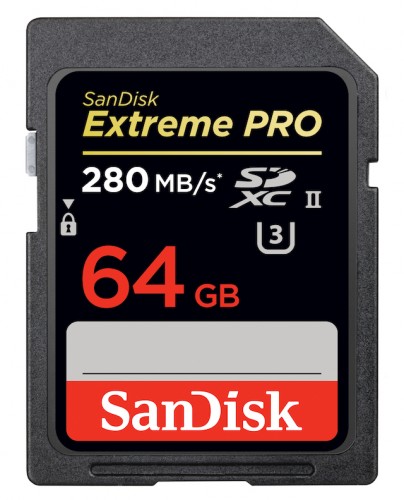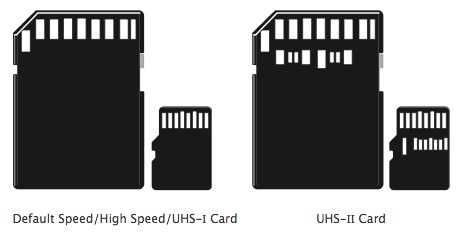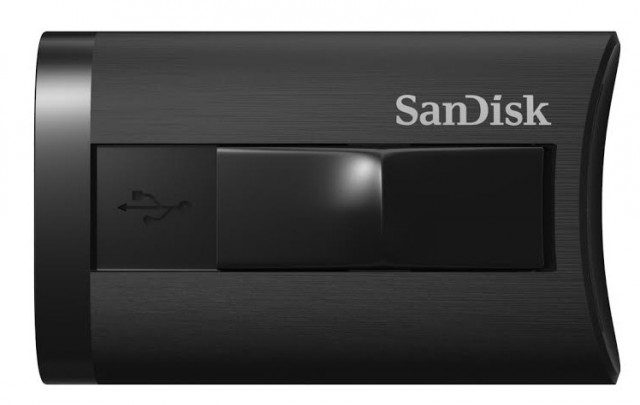
SanDisk has released new UHS-II SD cards with write speeds up to 250MB/s and read speeds up to 280MB/s. This new line gets its major speed boost from the UHS-II bus interface. Most SD-compatible cameras currently on the market support UHS-I, at best; however, we are just starting to see new cameras with UHS-II support (like the Fuji X-T1).
The new UHS-II bus interface offers the ability to build cards with up to 312MB/s transfer speeds, which is a big jump from the maximum theoretical speeds on the UHS-I interface at 104MB/s.

The new UHS-II cards have a second row of pins to support the higher data transfer rates. The first row of pins are identical to the standard SD cards we’ve seen on the market over the past several years and allow UHS-II cards to function normally in older, non-UHS II devices. Of course, if you don’t have a UHS-II compatible device, you will not see the speed benefits from the UHS-II bus interface.
UHS Speed Class symbols, such as U1 and U3, indicate minimum write speeds for real-time video recording. For UHS rated cards, you will find the numeric class rating within the letter “U” on the card’s label. (See the U3 labeling in the top image.)
Compressed 4K video capture data transfer rates will vary among cameras depending on what codec the camera uses. The new U3 Speed Class should be plenty fast enough to handle Sony’s XAVC-S 4K codec (used in the new Sony FDR-AX1), which captures 4K video at a 150Mb/s data rate. The U3 Speed Class at 30MB/s minimum write speed translates to a 240Mb/s data rate. While the 30MB/s minimum write speed may seem low, it’s worth noting that the SD Association has not established a speed class rating higher than U3 at the time of this card’s release.
Photographers need to keep in mind that the U1 and U3 ratings are practically meaningless for still photography. The max data transfer rates can vary widely among cards with the same U1 and U3 ratings.
Additionally, while there are UHS-I cards that offer a U3 speed class rating, it is unclear whether the U3 rating on these new SanDisk cards is valid for non-UHS-II devices. For more about SD card types and ratings, see the resource article Demystifying SD Cards.
The new SanDisk Extreme PRO UHS-II cards should be available in April in 16GB to 64GB capacities for $119.99 to $299.99.

SanDisk UHS-II Card Reader
SanDisk also unveiled a new reader with UHS-II compatibility and USB 3.0 interface, which should also be available in April for $49.99.

